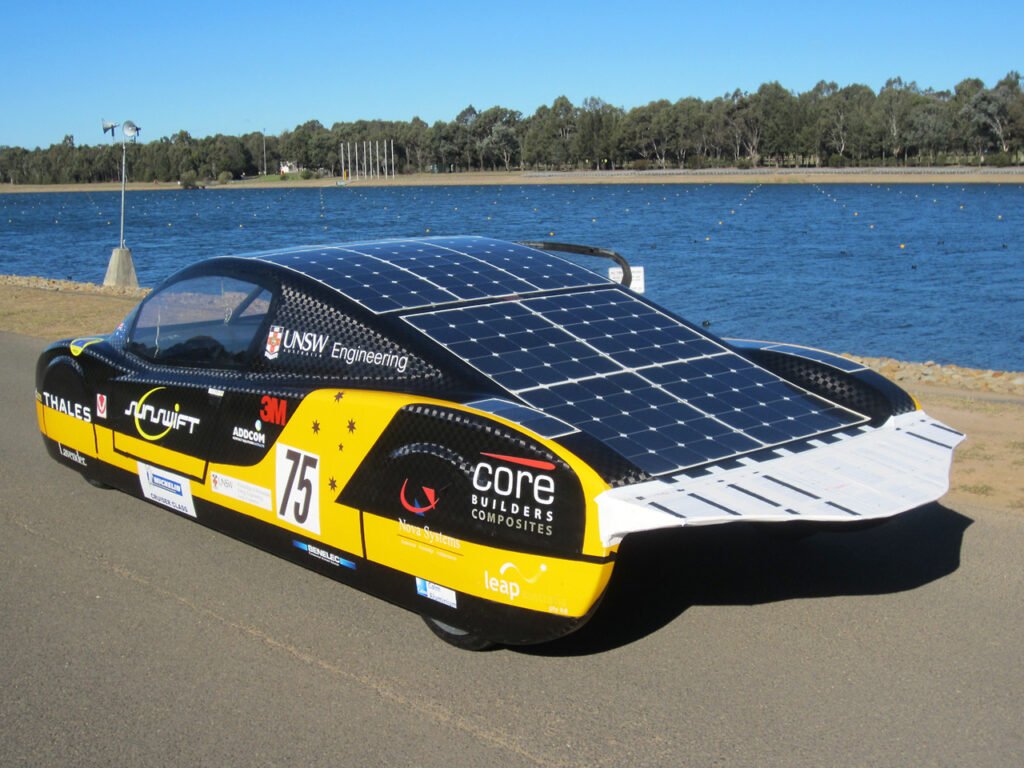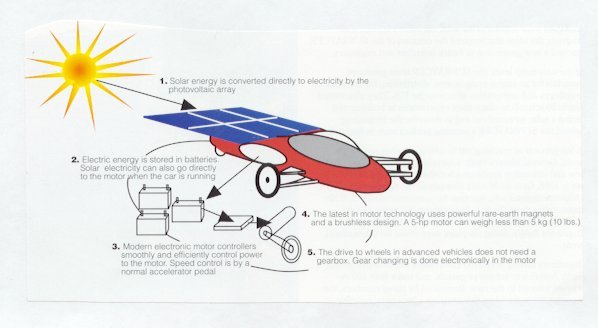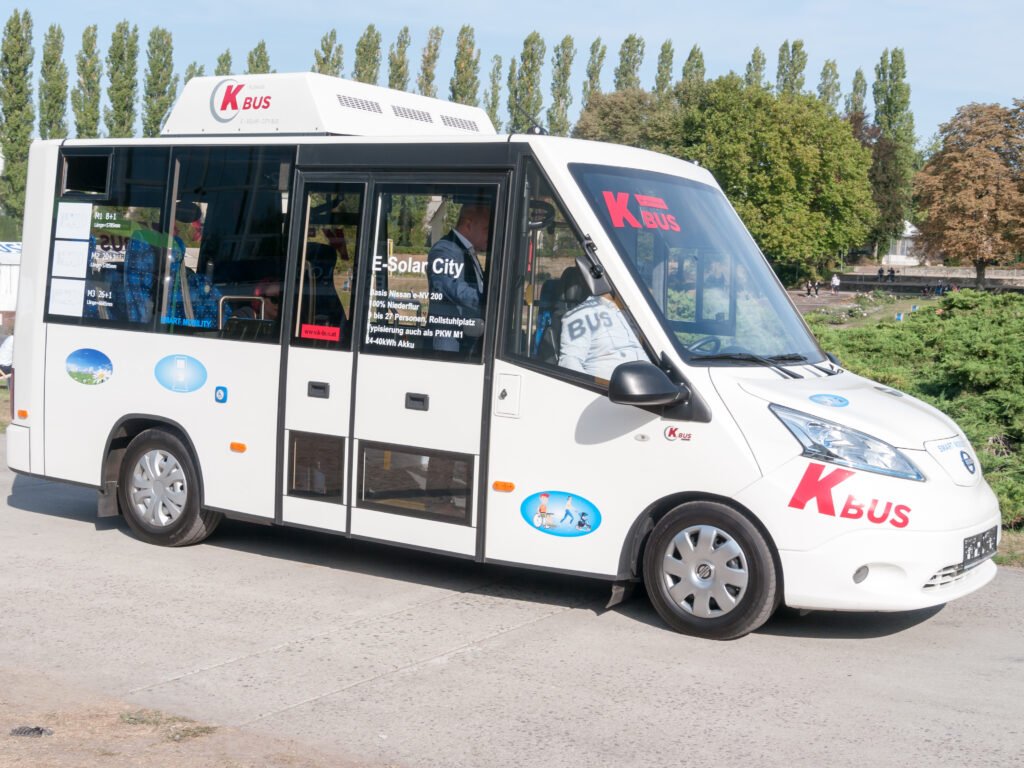
Solar Vehicle Introduction
Due to growing concern for the environment and climatic changing patterns, researchers believe that it’s the right time to change from combustion engines to renewable sources. Over the last decade, solar energy is becoming popular due to its eco-friendly nature. In this article, we will talk about what is a solar vehicle, how they work, advantages and disadvantages of using solar vehicles. Moreover, a List of solar vehicle companies in detail
What is Solar Vehicle?
The solar vehicle also referred to as the solar electric vehicle uses solar energy to power and is driven by electricity. Many solar technologies are in trend but solar vehicles are not popular in the utility market but are currently supported by government bodies. Photovoltaic cells in solar panels convert sun energy into electricity.
Complete solar vehicles currently are being sold for educational purposes and have not entered the commercial market.
Solar vehicles are not efficient and powerful now when compared to internal combustion vehicles. But increasing research in the solar tech field is believed that will reach closer to modern-day vehicles.

How Does Solar Vehicle Works?
Solar panels are the main constituent of any working solar technology. Solar vehicles are either fully solar-powered or partially dependent on solar energy. Solar arrays are installed on top of vehicles. These absorb light from the sun and solar arrays prices electricity. Electricity produced charges batteries. Batteries power the vehicle’s motor to operate and run the vehicle.
Solar-driven vehicles have the ability to generate 80 to 150 Volts of energy and cover up to ninety kilometers on a one-time recharge.
Mainly solar car comprises:
- Solar Arrays: Solar Cells together contribute towards the building up of modules. Additionally, modules bunched together make up solar arrays. These many PV cells convert sunlight into electricity.
- Electrical Motor: Converts one form of energy to another and generates up to 3 horsepower which means can attain speed up to 160 km/h.
- Handling system: A steering wheel that allows the vehicle to move in the desired way.
- Batteries: The energy is saved in storage capacities also referred to as batteries which run the electrical motor and navigational system.

Types of Solar Vehicles
As an increasing trend is growing in the use of solar energy there has been an increase in types of vehicles also which are solar-based such as:

Solar Cars:
- Solar cars have solar panels installed on rooftops that absorb sunlight and in turn produce electricity to charge batteries.
- Solar cars are not sold in the market as it’s still in the demonstration or conceptual stages. With gradual milestones in solar technologies, it will surely come into the market.
- As we all know the classic cars which are in use all have Internal combustion engines and they use fossil fuels. Fossils are burned up inside and heat is generated which moves the pistons inside and the car gets operational. But in Solar cars.
- As solar cars have less space as it’s not developed commercially. But the first family solar car was built in 2013.
- Telemetry is installed in solar cars to monitor cars’ energy consumption so that rivers can fully focus on driving.

Solar Bus:
As solar automobiles are costly and in conceptual stages and hence are supported by the government. The working principle is the same as in cars except, big solar arrays are in use. In some countries, Solar buses are used which are completely for free public transport. Similarly, Solar buses that are partially solar-based are also on the roads which are intended to reduce the emission of carbon gasses and thus help in reducing global warming.

Pros and Cons of Solar Vehicles
Advantages of Solar Vehicles
There are some quite interesting benefits of using solar vehicles:
- Solar vehicles if are fully based on solar energy then they emit no carbon gasses.
- Solar vehicles do not pollute the air with the emission of toxic gasses. Thus there is a huge reduction in air pollution.
- Solar electric vehicles do not need petrol, diesel, or gas and hence reduce the consumption of non-renewable sources. Thus helping non-renewable sources from getting extinct rapidly.
- Solar electric vehicles when compared to traditional vehicles reduce noise pollution.
- Solar-powered vehicles are eco-friendly.
- Solar vehicles help in improving carbon footprints.
- Solar-based vehicle usage will ultimately help in improving the ozone layer.
- When compared to IC engines Solar electric vehicles need less maintenance.
- Solar-driven vehicles have abundant fuel availability.
- As we know after a specific period IC engines have to be replaced due to their increasing pollution nature. But solar-based vehicles are not to be replaced with new cars.

Disadvantages of Solar Vehicles
As this technology is still far behind to reach its maximum potential and hence it shows its drawbacks as well:
- Solar panels are yet to reach their maximum utilization and hence are less efficient. Even Solar vehicles when compare with fossil-based vehicles are less efficient.
- Solar vehicles are weather dependent. Thus always will work effectively in areas where there are sunny seasons.
- Solar vehicles take hours in recharging batteries while traditional vehicles just need minutes to fill up their fuel tanks.
- With current technology Vehicles, speed is very less when compared to IC engines.
- We cant carry huge loads of goods in solar-based trucks as compared to traditional trucks.
- Since it’s not yet available in the utility market the main reason is its huge initial payments.
List of Solar Company Details
Even though solar vehicles are in their initial stages of development and yet there are a handful of entrepreneurs out there that still believe in this technology.

Squad Mobility:
- Squad mobility is a Dutch Startup company and has professionals of having 40 years of experience.
- The squad has built the world’s solar city car.
- This car has two variations L6 and L7 one moving with a top speed of 45km/h and the latter with 70km/h.
- L6 is a 2 seater amd L7 is a 4 steater car.
- Squad solar car charges automatically its batteries with the help of solar energy. Additionally, the solar panel charges batteries than can run cars up to 20km per day.
- Besides, the squad has fine comfort, auto parking, removable doors, and ACs can be installed and can be charged from a grid too.

Hyundai:
- Has made a Hybrid solar car.
- More than 50% of its batteries can be charged with the power of solar panels.
- This car is fully charged with solar panels alone and can only give 3 km.

Tesla:
- Tesla’s cyber track is expected to be released in the utility market.
- Cybertruck is an electric car that has sports cars performance and has the option to install solar panels.
- Solar panels will charge batteries per day to keep them running for about 24 km
NXP:
- Nxp. is a big company that has built the Stella Ersa, which is a partial solar car and runs with solar support as well.
- It is a self-driven car and is programmed to do many things such as when it’s low on its primary fuel switches to use solar energy automatically.
- This car when fully charge can charge other electric cars with the help of solar panels.
NEDO, Toyota Motor Corporation, Sharp Corporation

Sono Motors:
- Sona Motors is a german based company that has developed a hybrid electric car called Sion.
- Sion electric car comes can charge itself with solar energy.
- Sion has not only used solar panels on the roof of car but on side doors and also on the front bonnet.
- It has a two-way charging capability. This means it can be charged via sun energy and electrical sockets at the same time.
- This hybrid car has a battery that can drive up to 305km with a single charge.
- The solar range of this car is 112 km per week and max. Speed up to 140 km/h.
Conclusion:
There are still companies that are working to introduce solar technology in cars. Currently, solar tech cars are still at their initial stages of development and yet haven’t attracted many investors. This technology has its limitations and yet can’t compete at the level of traditional cars. Still, the world is waiting for solar technology to evolve in delivering promising cars.
- To visit the official website of the Indian Ministry of Power- Click Here
- To visit the Ministry of New and Renewable Energy- Click Here